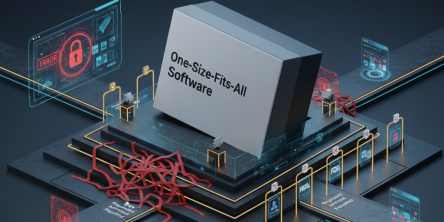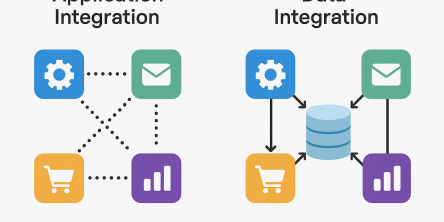Tricks to Trade: Industry Best Practices for Salesforce API integration

The cloud-based CRM, Salesforce has got the reputation of improving customer loyalty and business outcome. It helps in improving customer journeys and influence decisions. The CRM delivers greater visibility to customer information drives top-line profitability by improving products and solutions. Despite the compelling benefits, it has its own weaknesses. Businesses face problems in extending its functionalities via Salesforce API integration or extension.
By automation, Salesforce can be integrated with other enterprise systems, databases, ERP Systems, and CRM systems. Teams can get efficiency advantages and increase revenue by better serving customers. Out-of-the-box functionalities for Salesforce integration can enable applications to function like a unit. These unique advantages in return can help business teams in uncovering new cross-selling opportunities.
API integration approach for Salesforce should be based on industry best practices to overcome hurdles. Here are some steps for solving integration problems from real-world cases. It helps in improving the generic process for data movement:
Object Pattern - Application A to Application B: Salesforce integration templates should strive to make integrations dynamic, reusable, scalable, and simple. It should be a combination of the following elements:
- Source system: Where data resides.
- Criteria: Business logic to move copied data.
- Data Mapping: Data conversion from one format to another.
- Destination: Where data needs to be moved.
- Outcome Analysis: Comparing the final state with the desired state.
Migration: In this Salesforce integration pattern, a specific set of data is moved from one system to another. A migration pattern enables developers to develop automated integrations for multiple teams. IT teams set configuration parameters to move Salesforce data in or out of Salesforce. Developing reusable components for frequent migrations can save a lot of development time.
Broadcast: An act of migrating data from a to other single source systems on a real time basis. Broadcast pattern is similar to the one to many sync concept but it is transactional. It executes logic for previously modified items. It is optimized for an environment where there are many relationships. Here are some of the use cases it supports:
- When a sales order in SAP needs to be marked a Closed in Salesforce.
- Data synchronized between Siebel and Salesforce.
- Salesforce data needs to be be updated in other applications.
Aggregation: This Salesforce integration helps in accessing data from different systems and moving it into another system. It helps in keeping the data up-to-date. It helps in Broadcasting data from multiple systems in simple and effective ways. Teams can query different systems and merge data sets.
Bi-Directional Sync: IT is the process of uniting different data sets to set up a single system where every system has its own role. It improves the workflows and functioning by delivering a uniform view of data sets.
Correlation: This Salesforce integration pattern identifies common data elements and performs a Bi-Directional sync between them. It finds new records and different data sets. It helps in removing redundant and obsolete data.
To move technologies at the speed of business, organizations should ensure that their Salesforce API integration approach covers these patterns. A solution should offer templates for instant application integration and streamline data exchange. IT leaders should check out tooling for point to point connectivity and orchestrations. Anypoint templates to integrate wide use cases and support pervasive enterprise integration needs to connect old and new technologies. The connectivity should scale to accommodate data mapping and transformations in minimum steps and codes.
A solution generating executable data transformation programs allows users to transform data between source and target. It solves a wide variety of data connectivity challenges including data transformation, data mediation, consolidation of multiple databases, etc. between external trading partners, and customers.
Similar Articles
In the world of finance, speed and accuracy are everything. Decisions made a day late can cost millions, and delayed visibility into financial performance can leave even the best organizations blind to risks.
Discover the best tools to enhance employee recognition, boost morale, and create a more motivated, engaged workplace culture.
At first glance, off-the-shelf software appears to be a dream come true. They are quick to set up, cheaper upfront, and marketed as “universal.”
A modern business must continually adapt. This bit everyone seems to know.
The modern healthcare industry is undergoing a significant transformation. The models of healthcare that we are used to thus far are now making way for a more data driven approach
In the modern world, maintaining good health often feels like a constant challenge. Between busy lifestyles, sedentary habits, and lack of motivation, many people find it difficult to stay consistent with exercise, diet, or wellness practices.
Every news publisher's dream, or just getting started, hits that wall sooner or later. What do you build your site on? You’ve basically got two roads: WordPress or custom development.
Discover key features construction teams need in permit tracking software to boost efficiency, stay compliant, and streamline project management.
Thanks to cloud computing, specialized SaaS apps have become rather accessible.








